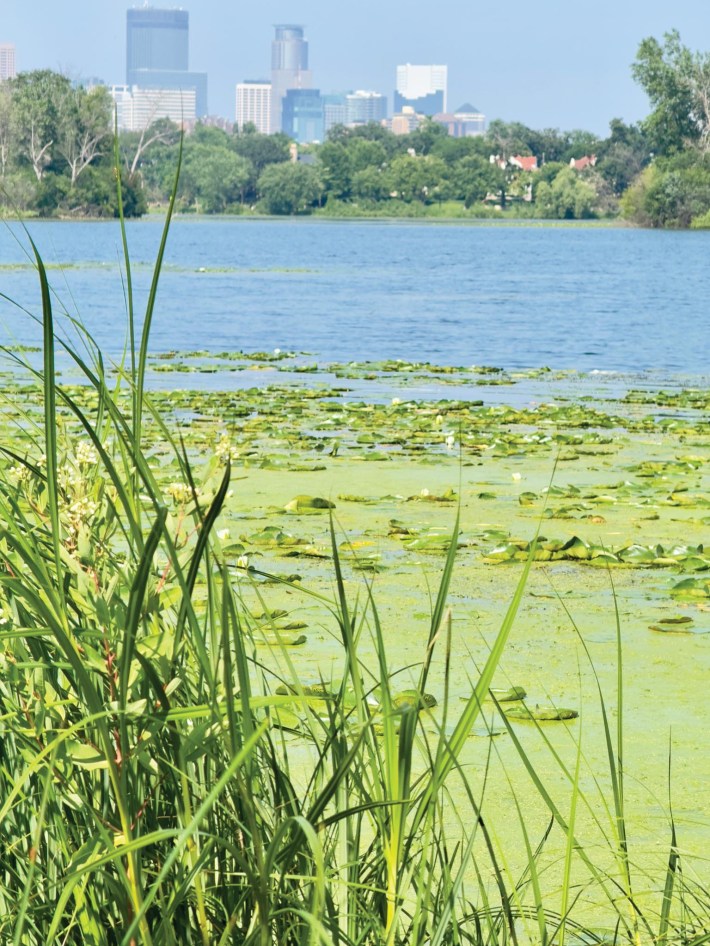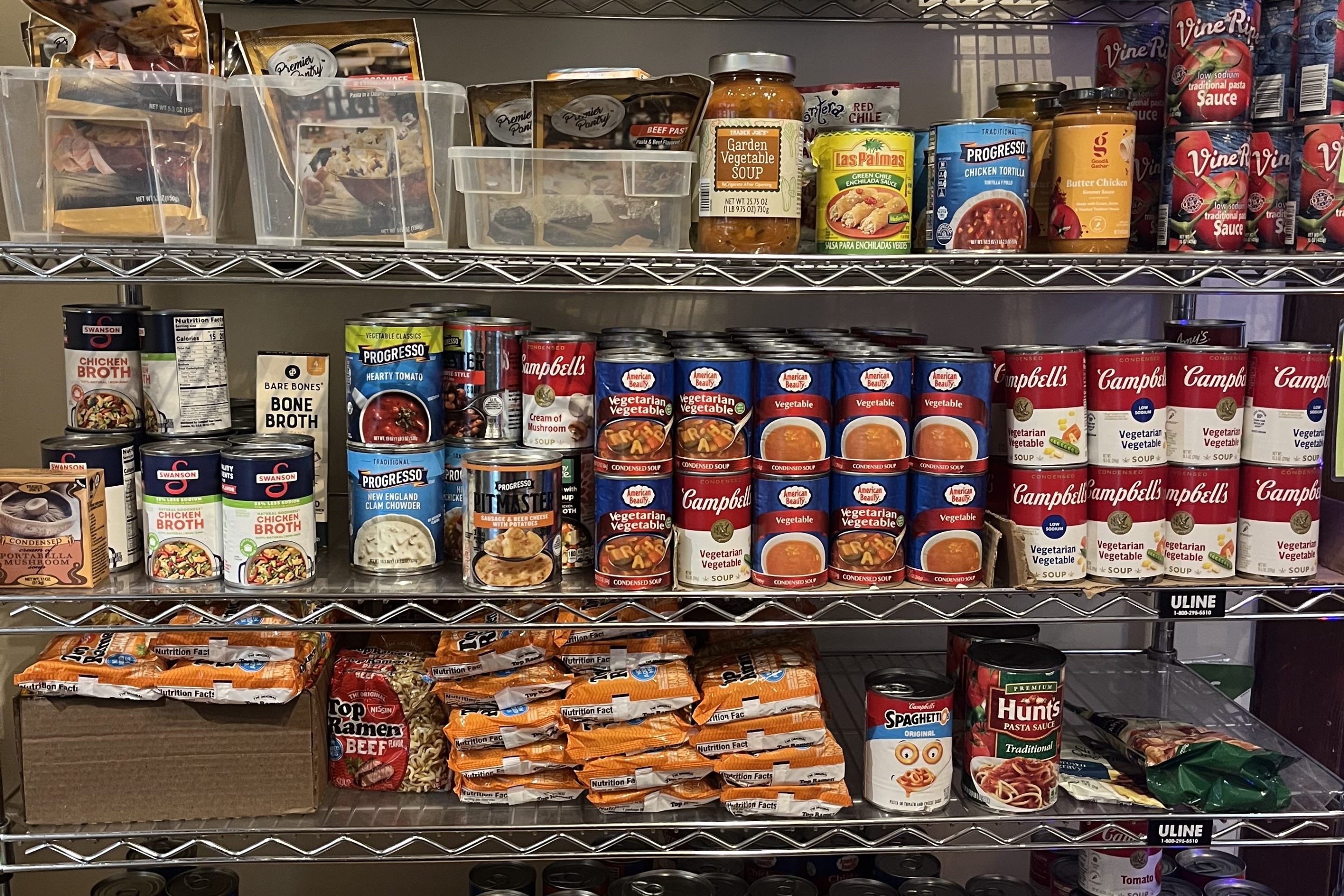Susan Lenfestey is a regular contributor. She lives in Lowry Hill.
After mats of aquatic weeds spread across Lake of the Isles this summer like mold on an old peach, it was a pleasant surprise to read that the C grade given by the Minnesota Department of Natural Resources to our city’s Chain of Lakes is considered “a triumph of environmental restoration.”

How can such a mediocre grade be considered a triumph?
According to Greg Stanley, author of the August 16 article in the Star Tribune, a C would not be a good grade in the wooded and undeveloped parts of the state. But for the four city lakes that collect runoff from roads and urban development, the scores are remarkable.
Stanley writes, “By the 1990s, the lakes were in bad condition and getting worse. The marshes, woods, and prairies that once surrounded the chain had long been drained away and paved . . . Water clarity was declining. Algae blooms were frequent.”
“A Minnesota Pollution Control Agency report found that Cedar Lake, the first in the chain, had nearly three times the phosphorus it had before development. Along with that phosphorus, a toxic stew of pet waste, fertilizers, pesticides, chemicals, and oils was piped directly into the lakes from lawns and streets through stormwater systems.”
Then there was an amazing turnaround, thanks to citizens who took action, and the partnerships that resulted.
“It was immediately clear that Minneapolis would not be able to fix the problem alone. Spurred on by citizens, the city formed a Clean Water Partnership with several agencies and organizations including the Minneapolis Park and Recreation Board, St. Louis Park, Edina, and the Minnehaha Creek Watershed District.”
According to Stanley, they divided up the $12.4 million cost of the restoration project and started work in 1995. This included dredging phosphorus-laden silt from smaller upstream lakes and creating ponds near the larger lakes to collect toxins and allow cleaner water to flow through.
“The city also increased its street sweeping program and started a public education campaign to cut down on the pesticides, grass trimmings, and fallen leaves washing into the lakes.”
That triumphant C grade also serves as a reminder of the days when realistic solutions mattered more than ideology, and comity was valued over combat.
That triumphant C grade also serves as a reminder of the days when realistic solutions mattered more than ideology, and comity was valued over combat.
It took good governance — creativity, collaboration, and compromise — as well as an engaged group of citizens, to pull our lakes back from the brink.
Those three Cs are sadly missing in today’s political grind.
Whether it’s the decrees emanating from the Oval Office, destroying partnerships and the planet with the stroke of a madman’s pen, or the ideological purity required right here in River City’s DFL, we are also on the brink.
As with the lakes, the health of our city depends on civility and cooperation between its citizens. The Minneapolis DFL needs to address its dysfunction, laid bare in the debacle of its recent convention, and come up with an agenda that doesn’t alienate so many Minneapolitans who are tired of infighting and oratory, and just want the city to provide basic services, safe streets, and a level playing field for all. And clean lakes.
We are part of a shared watershed. What happens upstream trickles down to us. How we conduct ourselves as a city sends ripples across the state. We need to pull our oars as one, or at least stop using them as cudgels.






